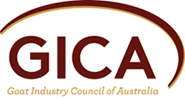Why
There has been a requirement to identify dairy goats as part of the National Livestock Identification System (NLIS) for sheep and goats for a number of years. However, due to a higher than normal incidence of infection rates most states have maintained exemptions on welfare grounds in dairy goats.
The project
This project aims to identify alternative identification devices that will provide dairy goats with the ability to identify stock to better manage traceability and product integrity issues such as chemical residues and other food safety matters. In addition providing producers with an ability to improve on-farm management and husbandry practices through better identification.
The project has recently started and is presently working on an international review of different technologies (e.g. hock bands, sub cutaneous implants, etc). Each device will be reviewed with the pros and cons listed prior to being reviewed by the NLIS Standards Committee and the Dairy Goat Society of Australia (DGSA) in conjunction with GICA.
If appropriate devices are identified then a three year trial will be implemented to ensure the devices will meet Australian production and environmental conditions. Impact If appropriate devices are identified and go to trial they could be on the market with provisional accreditation after six months from start of trial which will be about February 2015.
You can help
If you are aware of any devices that may be used or if you
would like to participate in the tag trial then please contact the DGSA
and let them know. Every lead to identify suitable devices will be
greatly appreciated.
